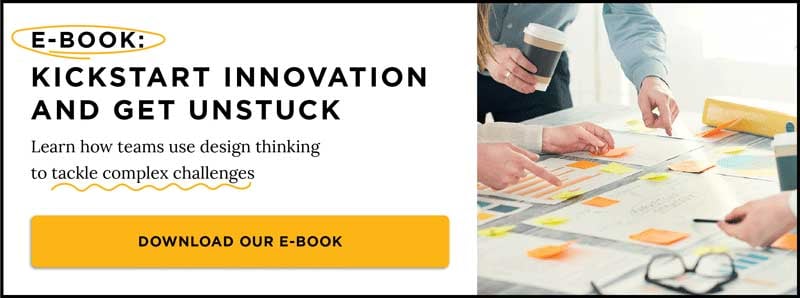In many cases adopting new business strategies means teams have abandoned old ways of doing things. But that is not the case when it comes to Agile, Lean and Design Thinking. These three methods are inherently complementary, and when companies use them in combination, it creates a highly efficient and deeply innovative environment where teams are primed to deliver exactly what customers need, while keeping them in the center of everything they do.
Let’s take a look at the three methodologies and how they can work together.
Design Thinking: The hallmark of design thinking is empathy for the customer or end user — putting oneself in the shoes of the customer, and uncovering their pain points, wants and needs. That focus drives ideation and encourages thinking outside the box (way outside of it sometimes) that leads to surprisingly wonderful solutions to ease those pain points and delight end users. Design thinking is all about integrating people’s needs, with new possibilities for success.
Agile: Like design thinking, Agile is also about evolving solutions based on user feedback throughout the process. Instead of coming up with a massive project plan and following every detail then delivering a finished product six months later only to discover it's all wrong, Agile is all about doing projects in short "sprints" in which teams build a feature or a prototype, share it with the customer or stakeholder, then gather their feedback and revise it. It allows project teams to adapt the plan more easily, identify flaws and fix them sooner, and to look for better, cheaper and faster ways to meet end user needs.
In this respect Agile and Design Thinking are interwoven. Both require teams to get close to the customer, and to seek out their opinions as part of the design process.
Lean: Lean methodologies reflect many of the same values as Agile. At its core, Lean is a business methodology that promotes the flow of value to the customer through two guiding tenets: Continuous improvement and respect for people. Being Lean is all about getting into a different mindset for product development — experimenting with what works and adapting to feedback along the way.
How Do These Approaches Work Together?
Think of it this way. Design thinking is exploring and solving problems; Lean tests possible solutions; and Agile adapts, pivots and makes changes along the way toward completion. The design thinking process help teams empathize with the customer, “painstorming” the customer’s pain points, wants and needs. Then they can ideate possible solutions, which naturally flows into the Lean process of learning, experimenting, and building prototypes, essentially turning design thinking ideas into real world solutions. This, in turn flows into the Agile processes of review, trial and error, execution and ultimately, delivery.
So if you are trying to decide which method will help your team achieve the greatest results, you are asking yourself the wrong question. Each of these methods adds value to the team, but together they are like the spokes of a wheel, revolving smoothly around the customer at their hub.
Learn how to enable innovation skill-building at scale with our free ebook, Kickstart Innovation: A Guide for Organizations.
